Native Plants
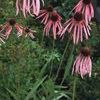
|
Common Name: Narrow Leaf Purple Coneflower
The leaves of this coneflower are lanceolate to linear-lanceolate, and the flowers are cone-shaped disks with purple, pale pink, or rarely white spreading ray flowers. The plant has one or more stems that are mostly unbranched, and flowers bloom from...
[ More Info ] [ Add to Shopping List ]
|
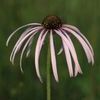
|
Common Name: Pale Purple Coneflower
In late spring to mid-summer, tall bare stems are topped with single, showy lavender pink flowers with drooping petals and cone-shaped brown seed heads. It makes a good cut or dried flower. If old flower heads are not removed the seeds are eaten by...
[ More Info ] [ Add to Shopping List ]
|
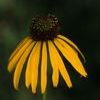
|
Common Name: Yellow Coneflower
The Yellow Coneflower is unique to the Ozarks. It boasts attractive plants with smooth leaves on stout stems up to three feet in height. The flower heads are single on long stalks with drooping, yellow petals around a broad, brown, conical seedhead w...
[ More Info ] [ Add to Shopping List ]
|
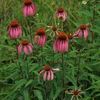
|
Common Name: Purple Coneflower
Multi-branched stems on plants up to five feet in height sport sturdy flower heads. The daisy-like flowers have purple petals surrounding a brown, cone-shaped seedhead. This is an excellent ornamental addition to the garden and also makes a good cut ...
[ More Info ] [ Add to Shopping List ]
|

|
Common Name: Purple Coneflower
This perennial is quite similar to the Midwestern native, Echinacea purpurea (Purple Coneflower), but differs in a few aspects. The flowers of Magnus are larger and rosy purple with a dark disk or cone, and its rays (petals) do not point down....
[ More Info ] [ Add to Shopping List ]
|
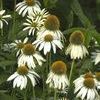
|
Common Name: White Coneflower
Echinacea purpurea 'White Swan' is a recent cultivar of the standard Purple Coneflower with the same large orange cone, and reflexed petals, only white. Standing erect at 36", it is a beautiful addition to brighten a dark spot in your perennial bed....
[ More Info ] [ Add to Shopping List ]
|
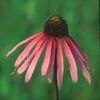
|
Common Name: Glade Coneflower
This purple coneflower is a coarse, hairy, native perennial found primarily on dolomite glades and slopes in Ozark region. It is similar to the more wide-spread Pale-Purple Coneflower, except for the pollen color is yellow on Glade Coneflower and whi...
[ More Info ] [ Add to Shopping List ]
|
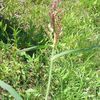
|
Common Name: Barnyard Millet
Tall, robust, non-native annual grass cultivated as a cereal in the tropics and subtropics. If sown during the rainy season, reaches maturity in about six weeks with good yields of rather coarse fodder. Fertile, moist but well-drained soils required ...
[ More Info ] [ Add to Shopping List ]
|
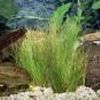
|
Common Name: Needle Spike Rush
This green, grass-like native sedge can be recognized by the oval-shaped, brownish-flowering spikes at the tips of smooth, round stems. These spike-rush species grow individually, in clumps along shorelines or in shallow water, sometimes forming ankl...
[ More Info ] [ Add to Shopping List ]
|
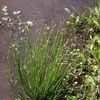
|
Common Name: Blunt Spike Rush
This native forms dense tufts of smooth, upright, unbranched stems, to two feet in height. Flowers from June through August. Seedheads are brown, scaly and conical and provide food for waterfowl....
[ More Info ] [ Add to Shopping List ]
|
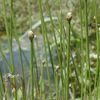
|
Common Name: Blunt Spikerush
This native plant is a summer annual up to 10 inches tall. Each plant produces a single culm or a tuft of culms. Each culm is green, hairless, round in cross-section and unbranched. The leaves are reduced to a single, rough, brown sheath at the base ...
[ More Info ] [ Add to Shopping List ]
|
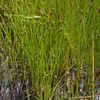
|
Common Name: Creeping Spike Rush
This native forms dense tufts of smooth, upright, unbranched stems, to two feet in height. Flowers from June through August. Seedheads are brown, scaly and conical and provide food for waterfowl. Distinguished from other rushes by its leaf-less stems...
[ More Info ] [ Add to Shopping List ]
|
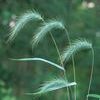
|
Common Name: Canada Wild Rye
This perennial native grass forms tufts with erect stems. Leaves are eight to 14 inches in length, medium- to blue-green with a rough texture. Flowering occurs from late summer through early autumn. Reddish-brown flowers are borne in dense spikes abo...
[ More Info ] [ Add to Shopping List ]
|
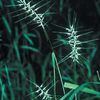
|
Common Name: Bottlebrush Grass
This showy native grass occurs in a variety of sites from mesic to dry upland forests, glade margins and upland prairies to streambanks. It does well on disturbed sites.
This grass is easy to identify because of its big inflorescence which has t...
[ More Info ] [ Add to Shopping List ]
|
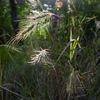
|
Common Name: Silky Wild Rye
Silky Wild Rye is an attractive woodland grass. This native perennial grass is unbranched. The blades of the alternate leaves are up to nine inches long and nearly ½" across. They are linear, dark green, and slightly hairy. The leaf sheaths are green...
[ More Info ] [ Add to Shopping List ]
|
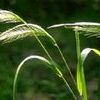
|
Common Name: Virginia Wild Rye
Similar to Canada Wild Rye, this graceful grass grows in full sun or moderate shade. Excellent for stabilizing disturbed soils in woodland situations, the plants grow in almost any soil and does particularly well in slightly moist soils along woodlan...
[ More Info ] [ Add to Shopping List ]
|
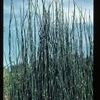
|
Common Name: Horsetail
Tall and slender, bamboo-like perennial of shallow waters and wet places. Plants grow to a height of 60" with base diameter of ½". The stems are hollow, segmented, rough surfaced and evergreen. Ashy grey bands mark stem segments...
[ More Info ] [ Add to Shopping List ]
|

|
Common Name: Purple Lovegrass
This showy, low-growing grass makes a stunning statement in the late season landscape, turning a brilliant purplish-pink at summer's end. Growing only a foot high, this is an excellent choice for dry sandy or gravelly soil where few other plants can ...
[ More Info ] [ Add to Shopping List ]
|
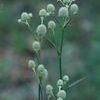
|
Common Name: Rattlesnake Master
This very interesting plant is topped by stiff clusters of round heads of greenish white spiky flowers. Its sword-shaped, medium green leaves make it a great architectural feature in the garden. It is an interesting cut flower and is especially attr...
[ More Info ] [ Add to Shopping List ]
|
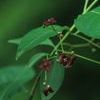
|
Common Name: Wahoo
A shrub or small tree that blooms in the spring with small purple flowers followed by scarlet red fruit that is enjoyed by birds. It has been cultivated as an ornamental since the 18th century for its attractive, oval-shaped red berries and reddish ...
[ More Info ] [ Add to Shopping List ]
|
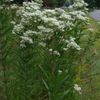
|
Common Name: Tall Throughwort
One of several native bonesets. The plants are rather hairy and have white flowers that bloom from late summer to first frost.
Common in dry upland prairies, old fields and open woods. Does best where sites have been disturbed through intensive g...
[ More Info ] [ Add to Shopping List ]
|
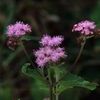
|
Common Name: Mist Flower
One of the shortest of all the Eupatoriums, this native perennial version of the annual ageratum gives a good show of color from mid-summer to early fall with flat-topped flower heads of tufty, dense clusters of bright blue-violet flowers. Excellent ...
[ More Info ] [ Add to Shopping List ]
|
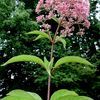
|
Common Name: Trumpetweed
Butterflies cannot resist the extravagant blooms of the Joe Pye family. This one offers rosy-pink flowers atop dramatically tall stems in August and September. The deep green leaves occur in attractive whorls along the length of the sturdy stems, and...
[ More Info ] [ Add to Shopping List ]
|
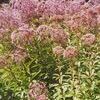
|
Common Name: Spotted Joe-Pye Weed
Spotted Joe-Pye Weed is a coarse, clumping perennial with a whorled leaf arrangement bearing 3-6 lanceolate leaves at each node. The plant's name comes from its characteristic dark purple spots on its stems, though sometimes the stems are solid dark ...
[ More Info ] [ Add to Shopping List ]
|
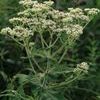
|
Common Name: Boneset
From July through October, dome-shaped clusters of white flowers bloom over hairy leaves that are oppsoite each other and clasp the stem. Native Americans and later settlers used the plant to treat a wide variety of ills including flu called "breakbo...
[ More Info ] [ Add to Shopping List ]
|
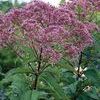
|
Common Name: Joe Pye Weed
This summer standout is easily grown in average, medium moisture soils in full sun to part shade. Joe Pye naturally occur in low moist ground, in wet meadows and thickets and along stream margins. Plants prefer gardens with moist, rich soils. It is ...
[ More Info ] [ Add to Shopping List ]
|
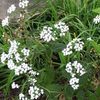
|
Common Name: White Snakeroot
White Snakeroot is native to woodland areas. From late summer to frost, it features small, fluffy, bright-white composite flowers arranged in loose, flattened clusters atop smooth stems. Sharp-toothed, lance-shaped dark green leaves are paired along...
[ More Info ] [ Add to Shopping List ]
|
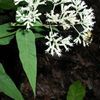
|
Common Name: Upland Boneset
Like other bonesets, the flowers of the Upland Boneset are white and arranged in flat-topped clusters. Leaves are elongate with a toothed outer margin. Plant 2 to 6 feet in height. Plants of the boneset family are primarily species of swamps and mars...
[ More Info ] [ Add to Shopping List ]
|
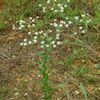
|
Common Name: Flowering Spurge
Flowering Spurge grows in the most barren areas and blooms freely in the midsummer sun. The flowers are small and delicate, and the plant has a milky white sap that helps prevent dessication....
[ More Info ] [ Add to Shopping List ]
|
